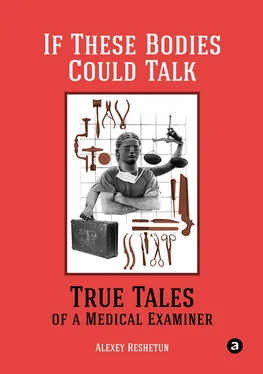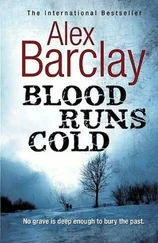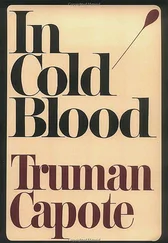The autopsy was carried out by doctors from the Medical Chancellery based on an Investigative Order to determine the cause of death of Major Apukhtin, who was found dead in a well at his home. The doctors were asked the following questions: (1) "Were they of the view that Apukhtin drowned himself in the well or was he poisoned?" (2) "Did the Major die a violent or natural death, or was it a case of suicide?" A complete examination of the body was conducted. The conclusion was as follows: "… All of the scratches on his body appeared to be from a tree, stone, or a fall… Based on this examination, it appears that the man drowned, which caused a lot of water to enter his stomach along with other damage, and he was neither murdered nor poisoned." [6] Ibid .
Just like anything else in life, people have at times attempted to take advantage of forensic science, twisting it to try to suit their own political goals. During the late nineteenth century, the tsarist government opened the so-called Multan case, in which forensic doctors gave deliberately false conclusions.
"On May 5, 1892, in the village of Stary Multan in Vyatka Province, the headless corpse of the beggar Matyushin was found. Witnesses said he suffered from epilepsy. Following a forensic examination, which was not conducted until an entire month had gone by, the expert falsely concluded that Matyushin died from a cut to the neck. He attributed cuts on his lower legs to having been hung up to drain his blood out, supposedly 'as during a [ritual] sacrifice.' Based on this, members of the Udmurt ethnic group were accused of killing the man. This conclusion, however, was later refuted by progressive Russian scientists Feodosiy Patenko and Emiliy Bellin. Bellin conducted a series of experiments and was able to prove that based on the absence of any blood on clothes or other signs of having bled to death, the head had been removed after he was already dead, to simulate a ritual killing. Following three hearings to consider this scientific examination, the Udmurt peasants were acquitted." [7] Джалалов Д. Предмет и Содержание Судебной Медицины. Лекция. URL: http://library.tma.uz/ ..
With time, forensic medicine has grown and developed. Thanks to new research, today, it includes a vast range of cutting-edge knowledge and technology, and is one of the most engaging fields of medicine. The Moscow Forensic-Medical Bureau boasts a highly developed scientific and practical infrastructure with leading experimentation and research. Medical students and those from other specialties work here, alongside numerous fascinating, creative people, including world-renowned scientists and young, innovative experts. Institutions carrying out their own "independent" examinations is a recent fad in Russia, which often gives people the false impression that these examinations are indeed independent, and that their conclusions are unbiased and objective. Alas, that is often not the case – and this is the reason why the independent status of state medical examiners is confirmed and enshrined in federal laws. State medical examiners' salaries do not depend on the contents of their conclusions, and the positions of either party relative to a court case have no bearing on their work.
2. JUST WHO IS A MEDICAL EXAMINER?
Before writing this section, I asked my blog readers to describe to me what, in their minds, is a medical examiner's appearance. As I expected, most of the responses were heavily influenced by stereotypes they had seen on television and in movies. Movies avoid ever showing medical examiners' offices, and instead prefer the drama of a forensic dissection laboratory – where autopsies are performed on dead bodies. In movies, a medical examiner is almost always an aging man, unshaven, balding, and eccentric, with a sweaty face and a wrinkled white coat. He seems to work exclusively in dimly lit basements, with a messy desk covered in old newspapers and half-eaten food, an ashtray overflowing with cigarette butts, and with mysterious stains on the walls, desk, and his lab coat. The character himself is inevitably strange and constantly making deadpan jokes about his work. Rarely does he leave the laboratory, and when he does, he always manages to be casually chomping on a sandwich or a bag of chips, which he will offer to the investigator, only to be surprised when his offer is rejected. Often, he is portrayed as being a bit tipsy and, in older shows, almost always as a smoker. When the investigator asks for his conclusions, the medical examiner will, without fail, wipe his hands on his coat, whip out his notes, and say, in a weather announcer's voice, "Well, it is just as I suspected…" before once again offering the investigator a chip.
But there is yet a second type of medical examiner character in movies, which is quite the opposite to the first one. He is also invariably a man, middle-aged, intelligent, always well-dressed, and he speaks in confident tones that assure you he knows absolutely everything about everything. He needs to establish the exact time of death – and he will, right down to the second. He needs to assess the damage – and he will do so methodically, as the picture of calm, without the slightest shred of doubt. For some reason, he does his job, as well as that of the criminal profiler, which has nothing to do with his position. Occasionally, this type of fictional medical examiner may be a woman – she will be efficient, with her hair in a messy bun, clicking around in high heels as she zeros in on the next task on her to-do list. Regardless of which type of medical examiner our screenwriters have chosen, they often mistakenly refer to the character as a "pathologist," who also happens to take photos of the body at the crime scene, gathers fingerprints, and bags up pieces of evidence. Even more surprisingly, along with the investigators, the character will report on the investigation results to the police chain of command! This is what my readers had to say. Enjoy some of their submissions below:
"I always imagine a medical examiner as a middle-aged man, about fifty-five, and balding with gray hair. He is not married, and he does not have any children. He lives in a small, tiny apartment that belonged to his parents once, which is in shabby condition because his wages are pretty low. He is not very talkative, very calm, and does not have any hobbies because he is always working. He only has one or two friends, who are also doctors, probably people he went to school with. He usually watches television at home. He does not drink much, but he is a heavy smoker. At his age, he is disillusioned with life, has no more dreams or plans. Once he retires, he will continue living the same way he always has."
"He is average height or a little shorter. He is slightly overweight and unshaven. He is always bald, with hairy arms. He has a bad temper, can be caustic toward others, and occasionally even rude. Many think he comes off as a know-it-all. But his friends love and respect him. Of course, he drinks on the weekends and holidays, but he judges others for losing control. He used to drink too much himself but has managed to get his life together. He quit smoking, too. He has weird hobbies that have nothing to do with his job – like studying Esperanto. He is well read and educated."
"He is a large, grouchy man. He hates other people, even despises them a little bit. He looks down on them, even if they are physically taller. He divides the world into red, black, and white, and there are no nuances as far as he is concerned. He could slaughter a pig with a nail file if he had to. He is unpretentious in his food, clothes, music, and movies. People around him do not necessarily respect him, but they are a little afraid of him."
Читать дальше












